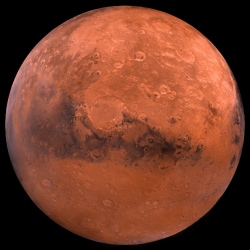
Researchers working on the Maven satellite have reported a big set of results in a clutch of scholarly papers. These detail how Martian air today is being removed at high altitudes through its interactions with the Sun. They calculate the rates at which gases escape, and suggest why these rates may have been even higher in the past.
"We’re well on the way to answering many of our questions; much further along actually than I thought we would be at this stage," said Bruce Jakosky, the principal investigator on Nasa’s Maven spacecraft. "What we’re reporting today is data from just the first 6-7 months from our primary mission.
"We’re still analysing this data, and we have already been approved for a mission extension that will allow us to round out one full Martian year and to see the response of the system to all the seasons on Mars," he told BBC News.
All the observations by previous satellites and landers at the Red Planet indicate that it was once shrouded in a thick blanket of gases, which supported the presence of liquid water at its surface. This is evident in the many landscape features that resemble the remains of river channels, deltas and lakes.
But the air pressure on Mars today is less than 1% of what it is on Earth, meaning any free water would boil away or freeze solid. Some of the air has probably reacted with, and been incorporated into, minerals at the surface.
However, the most likely explanation for the atmosphere’s loss, and the one that Maven began testing last year, is that the Sun has simply stripped it away, turning Mars from a warm and wet world into a cold and dry one.
